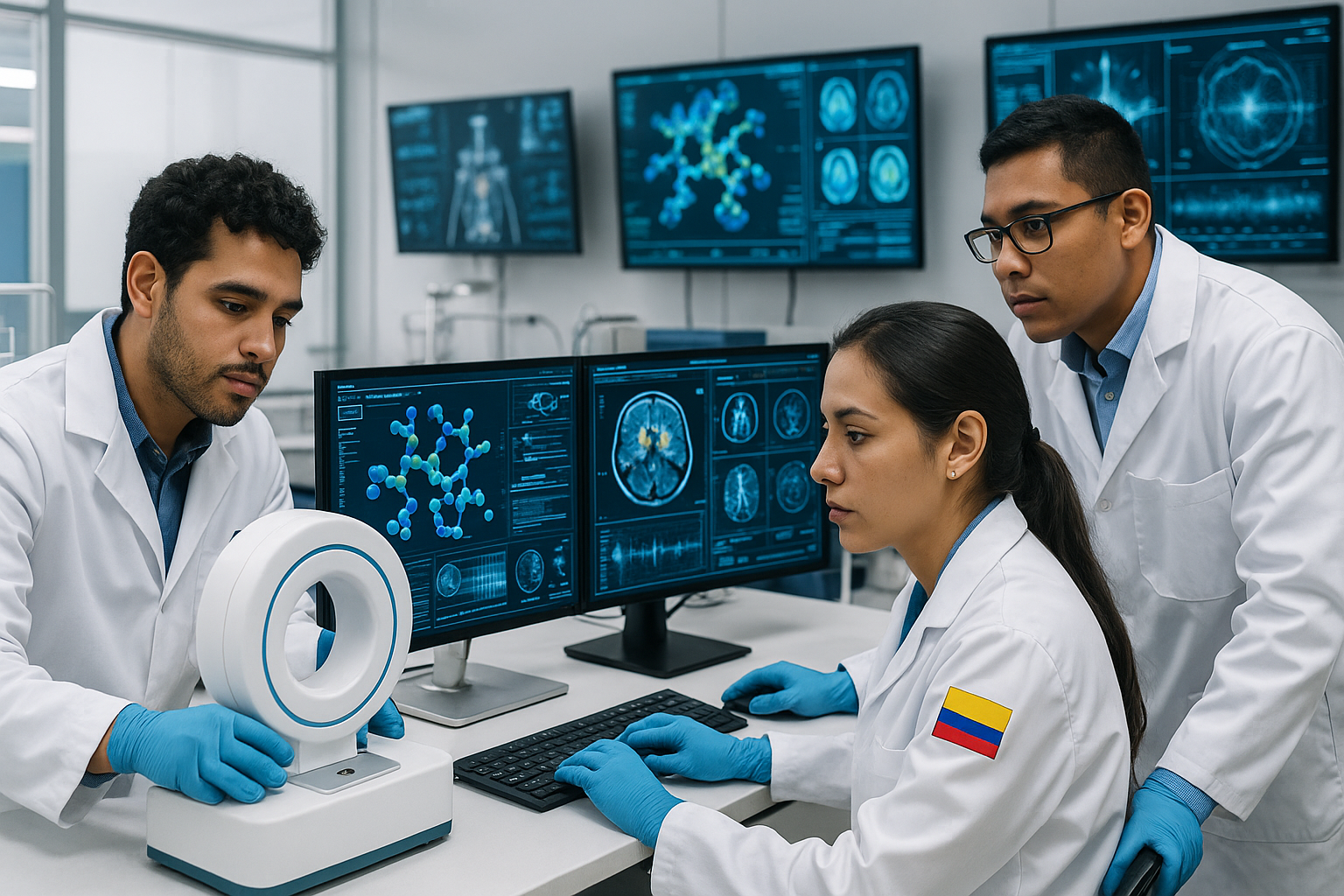


A revolution in medicine is underway, and its name is theranostics. This powerful fusion of diagnostics and therapy allows doctors to see and destroy diseases like cancer with molecular precision, offering new hope where none existed before.1 The global pharmaceutical industry is in a strategic race, pouring billions into this new frontier, with the market projected to explode from $2.33 billion in 2024 to $28 billion by 2032.1 Yet, this explosive growth has created a paradox: the science is moving faster than the infrastructure needed to support it. The world is facing a critical shortage of specialized clinical trial sites capable of developing these life-saving drugs, creating a golden bottleneck.1
This global crisis presents a once-in-a-generation opportunity for Colombia. While the nation currently faces gaps in its own radiopharmaceutical infrastructure, it possesses a dormant legacy of leadership and all the necessary ingredients to solve this global problem.1 By strategically investing in a purpose-built theranostics ecosystem, Colombia can leapfrog decades of incremental development, transform its healthcare landscape, and establish itself as the undisputed research and development hub for all of Latin America. This is not just about improving domestic healthcare; it's about reclaiming a leadership position, capturing a lucrative global market, and defining the future of medicine in the region.
To understand why Colombia is uniquely positioned for this moment, we must look to its history. It is a little-known fact that Colombia was not a follower but a trailblazer in nuclear medicine. In 1985, at the Clínica Marly in Bogotá, the very first commercial medical cyclotron in Latin America was installed.1 This pioneering project, spearheaded by the visionary Venezuelan nuclear physicist Dr. Luis Carlos Domínguez, marked the dawn of commercial radiopharmaceutical production in the region. While other countries had research cyclotrons, Colombia was the first to establish a facility dedicated to producing these critical isotopes for direct patient care.1
This was a bold, forward-thinking move that placed Colombia at the vanguard of medical innovation. Decades later, that pioneering spirit has been overshadowed by systemic challenges. The nation now faces a stark paradox: it is burdened by the very diseases theranostics is designed to combat, but its medical infrastructure has not kept pace with the revolution it helped to start.
The healthcare challenges are urgent and measurable. Cardiovascular disease remains the leading cause of death, responsible for 175.73 deaths per 100,000 inhabitants in 2022, with ischemic heart disease alone accounting for 45,465 deaths in 2023 (17.2% of total mortality).1 This crisis creates a massive economic burden, with care costs for noncommunicable diseases projected to increase by 40% between 2022 and 2030.1
The explosive growth of theranostics has created a fundamental global crisis, what industry experts call the "Infrastructure Paradox": scientific potential is far outpacing the physical and human capacity to run clinical trials.1 The primary constraint on the entire multi-billion-dollar Radioligand Therapy (RLT) industry is a severe, worldwide shortage of trial-ready clinical sites.1
Why is this happening? Because becoming a trial site is extraordinarily complex. Most world-class oncology centers fail the qualification process because it requires a unique combination of capabilities rarely found in one location 1:
This global shortage is slowing down the development of life-saving drugs. This is the moment for Colombia to step onto the world stage. Instead of being a follower, it can become the solution.
Colombia is not just another country with potential; it possesses a unique combination of strategic advantages that make it the ideal candidate to become the theranostics hub of Latin America.
This vision is not a distant dream. It is a proven, replicable reality. The planned implementation of a turnkey theranostics center at the Hospital Internacional de Colombia (HIC)—the first South American hospital to join the prestigious Mayo Clinic Care Network—proves that with the right strategic partnership, Colombia can leapfrog years of development and establish world-class capabilities in record time.1
Consider the metrics:
The HIC case is the definitive proof that this model works in the Colombian context. It provides a de-risked, validated path for others to follow, reconnecting the country to its legacy of leadership.
Colombia stands at a unique historical inflection point where global market forces, technological advancement, and strategic positioning converge to create an unprecedented opportunity. The theranostics revolution is happening now, and global pharmaceutical companies are actively seeking partners capable of supporting this transformation.
The choice facing Colombia is stark but clear: continue as a consumer of medical innovation, perpetually dependent on foreign expertise and supply chains, or seize this moment to become a creator and leader in one of medicine's most transformative fields. The window for this opportunity will not remain open indefinitely. The advantage belongs to those who act decisively.
By investing in theranostics leadership, Colombia can simultaneously transform healthcare outcomes for its citizens, create high-value economic opportunities, and establish itself as Latin America's medical innovation hub. The moment for decision is now. The opportunity for transformation is unprecedented. The potential for leadership is within reach.
Sources